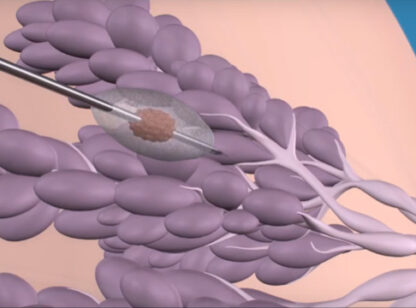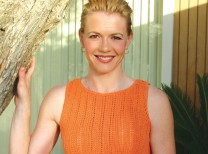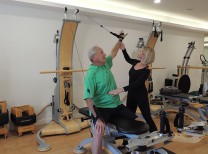A favorite teacher of mine, Robert Fritz, is known as the Father of Structural Dynamics. He teaches two basic truths about advancement in any setting: When we focus on what we want to create, we advance. When we focus on problem-solving, we oscillate.
Oscillation is repetitive movement from one end of the spectrum to the other. A simple example would be yo-yo dieting. In a problem-focused mindset we progress towards our goals, but as soon as there is less of the problem we become less motivated to continue and reversal occurs. It’s like a rocking chair moving back and forth. It doesn’t really go anywhere.
Compare the above scenario to a car focused towards a destination. There is no decrease in drive and motivation until the destination is reached, and at that point there becomes a new destination. There is constant advancement towards the goal.
Health creation follows this same rule: Focus on the problem and we tend to advance and then reverse in our progress. Imagine if instead of focusing on the problem, such as high blood pressure, high cholesterol, or high body fat, we focused on what we want to create. Or in other words, if all those problems were gone, would we have the health we want? What if we shifted our focus to doing what was needed to have the life we want?
This idea is integral to the practice of Functional Medicine. Creating health has an automatic side-effect of reducing disease. So if we make an honest reality check to understand our starting point and compare that to our health destination, we can create a plan with more certain results of advancement rather than oscillation. Our focus is on an experience that we desire and as we near that reality, we look again at what is possible next from our new healthy vantage point. This leads to an onward progression towards more of what we want and sustains the progress we have achieved.
Western medicine has become a problem-focused structure. Physicians are taught to curate the signs and symptoms the patient presents, then to create a differential diagnosis of possible problems that explain the condition of the patient, and then to narrow that list to a single problem that can be treated. Our focus becomes the problem rather than the experience of the whole person.
Integrative care uses the presenting problem as a guide of where to start in building a whole, healthy patient. If health is the goal, then all actions support this starting point where the patient is distressed. So if a patient seeks vitality but has high-blood pressure, an integrative or functional approach looks to heal the underlying cause of the high-blood pressure because this cause is creating a system-wide impact on the patient. Incorporating healthy habits that have a side effect of lowering the blood pressure moves the patient towards vitality and the blood pressure tends to resolve in the process.
Focusing on what we want to create begins an endless pattern that is sometimes described as a repeated cycle of action – result – evaluation – adjustment. As we implement this tool in viewing our health we shift our focus towards what vitality and health mean to each one of us personally and are empowered to create a life of meaning on our own terms!
Dr. Brossfield is the medical director at Eisenhower Wellness Institute and can be reached at (760) 610.7360.













































Comments (0)